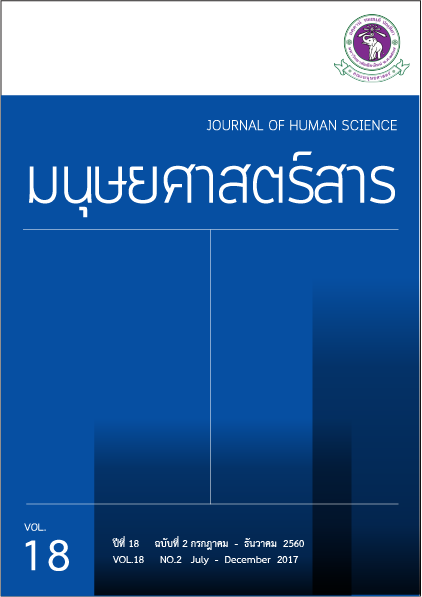สัมพันธบทในนิทานไวยากรณ์ของ เอริค ออร์เซนนา
Main Article Content
บทคัดย่อ
บทความฉบับนี้นำเสนอการศึกษาวิเคราะห์ความสัมพันธ์ระหว่างตัวบทของนิทานไวยากรณ์และตัวบทจากแหล่งต่างๆ ที่มีมาก่อนหน้าในแง่มุมของสัมพันธบท ซึ่งปรากฏร่องรอยเด่นชัดในนิทานไวยากรณ์ทั้งห้าเรื่องของ เอริค ออร์เซนนา โดยศึกษาสัมพันธบทในกลวิธีการเขียนในมิติของบทละครและกวีนิพนธ์ ภาพนักเขียนและวรรณกรรม ในส่วนการวิเคราะห์ผู้วิจัยอาศัยกรอบแนวคิดเรื่องโครงสร้างภาษาของนักวิชาการด้านภาษาศาสตร์ในแนวคิดโครงสร้างนิยมและแนวคิดหลังโครงสร้างนิยม ซึ่งทำให้เห็นว่าสัญญะทางภาษามีลักษณะไม่แน่นอนตายตัว แต่เป็นเครือข่ายความสัมพันธ์ที่ตอบโต้ ผสมผสานระหว่างความแตกต่างที่หลอมตัวกันเข้ามา ส่งผลต่อการปรับเปลี่ยนความหมายของตัวบทหนึ่งๆ ได้ สิ่งนี้นำไปสู่ประเด็นคำถามของงานวิจัยถึงเหตุผลของการใช้สัมพันธบท การผสานตัวบท และผลของการใช้สัมพันธบทที่มีต่อนิทานไวยากรณ์ของนักเขียนท่านนี้ ผลการวิจัยได้พบว่า ลักษณะประการแรกผู้ประพันธ์ได้กล่าวถึงชื่อวรรณกรรม ชื่อของตัวละครที่โด่งดังหรือพาดพิงถึงฉากสำคัญของวรรณกรรมหรือหนังสือเล่มอื่นๆ ลักษณะประการต่อมา ยังได้พบการสร้างสัมพันธบทโดยเชื่อมโยงถ้อยคำ ประโยค ตัวบทวรรณกรรมและตัวบทที่เป็นงานศิลปะแขนงอื่นๆ รวมทั้งถ้อยคำของสังคม กล่าวโดยสรุปคือ การใช้สัมพันธบทของผู้ประพันธ์เป็นการแฝงอุดมการณ์เพื่อธำรงรักษาภาษาและวัฒนธรรมฝรั่งเศส เพราะนอกจากตัวบทเหล่านั้นจะเป็นภาพแทนความหมายทางวัฒนธรรมแล้ว ยังส่งเสริมการปลูกฝังความโน้มเอียงทางอุปนิสัย (ที่เรียกว่า ฮาบิทัส) ในการรับวัฒนธรรมที่มีคุณค่าให้เกิดแก่ปัจเจกบุคคล และกลุ่มคนในสังคมได้อีกด้วย


